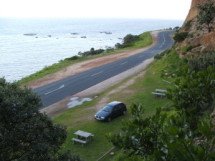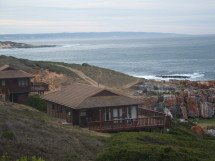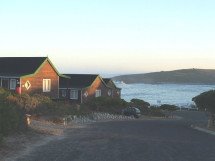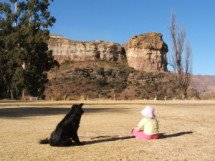 The Cape Town broadcasting studio opened officially in September 1924 and was was situated in J.N.X. building, Greenmarket Square (Photograph circa 1924).
The Cape Town broadcasting studio opened officially in September 1924 and was was situated in J.N.X. building, Greenmarket Square (Photograph circa 1924).Part Two of the account of the early days of radio in South Africa during the 1920's as told by South African Dxer, Nick Kendall.
The candid account, in Nick's own words, provides an insight into what was involved in being able to listen in during the early pioneering days of radio broadcasting.
It was about 1923 when Johannesburg started testing (and a little later Cape Town).
Five Valve Superhet
I decided that I wanted a beter receiver so I bought a home-made five valve superhet from a friend. This comprised of three staged HF (RF), oscillator, detector and two stages of LF (AF). It had thirteen controls : seven rheostats, three variable condensers, volume, potentiometer and tone.
The tuning was so tricky that it took about 10 minutes to tune Cape Town. Just imagine three stages of HF - each tuned by a separate condenser - there was no "ganging" in those days.
After a while I got fed up with the set and wrote to "Modern Wireless" for a suitable circuit. I told them that I wanted a four valve set and enclosed a postal order for 2/6 (25 cents).
The "Family Four"
The set was called the "family Four" and consisted of one HF (tuned anode), a detector and two LF's with switching arrangements so that one, two, three or four valves could be used.
They sent me a blue print (actual size) template, drilling panel, wiring diagrams (both practical and schematic). I had the panel drilled by sombody that I knew - did not take a chance myself. Ebonite had a nasty habit of splitting at the last moment. These days ebonite panels have a glossy surface. It was believed that this glossy surface acted as a conductor so it had to be sandpapered and polished again before using. You have no idea of the trouble we went to in building those old sets. I wired it up okay, switched it on and it worked fine - picked up Johanessburg quite easily.
Amplion Horn Speaker
I had an "Amplion" loudspeaker - the only one with an oak horn which produced a much better tone than other metal horns or trumpets.

Johannesburg, Cape Town and Durban radio stations
Johannesburg opened officially in 1924 (1st July) and a couple of months later, Cape Town (September 1924), followed by Durban (December 1924). We thought it wonderful to be able to switch between Cape Town, Johannesburg or Durban.
AUDIO CLIP
In September 1924, the Cape Peninsula Broadcasting Association officially launched Cape Town's radio service in JNX Building, Greenmarket Square.
Studio manager Rene Caprara (who later became the Director-General of the SABC) described those early broadcasting days during an interesting interview with Colin du Plessis, available here.

The Johanesburg Broadcasting Station cage antenna on top of Stuttaford's Building, Rissik Street. The control room was located directly below the antenna and the studio was situated on the third floor (Photograph circa 1924).
Marconi, Gecophone and home-made radio sets
Everybody was thrilled and either made or bought sets. As far as I can remember, the only sets on the market at the time were Marconi and Gecophone but nearly every shop sold components - not at all like today (1970's) when if you ask for an for an egg insulator, the chap just googles at you and says "W-w-what is that ?"
I used to try for stations after Cape Town closed down but heard nothing but atmospherics.






















No comments:
Post a Comment